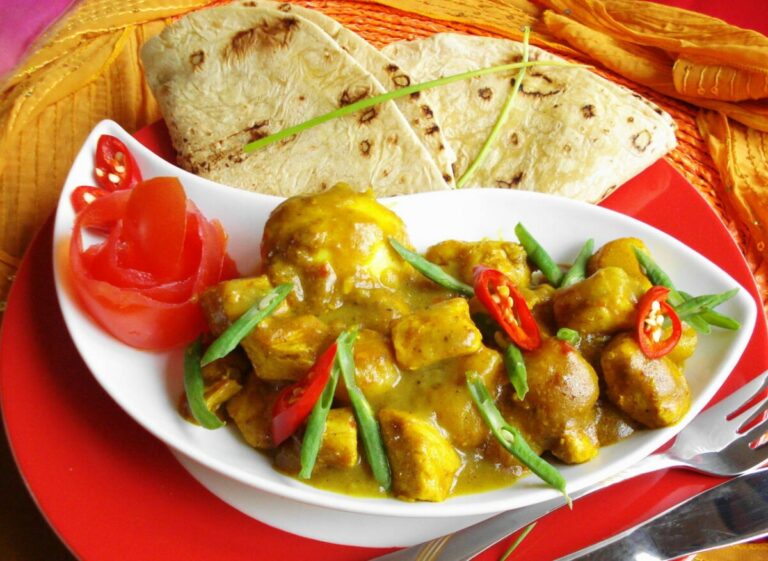Introduction: Understanding Surinamese cuisine
Surinamese cuisine is a blend of different cultures, including Dutch, African, Indian, Chinese, and Javanese influences. The country’s geographic location has also contributed to its diverse cuisine, which incorporates ingredients such as cassava, coconut milk, and plantains.
One of the most iconic dishes in Surinamese cuisine is roti, a type of flatbread that is often served with curries and other dishes. Roti has a long history in Surinamese culture and has become an integral part of the country’s food traditions.
The History of Roti in Surinamese Culture
Roti has its origins in India, where it is a staple food. Indian migrants brought the recipe for roti with them to Suriname in the late 19th century, where it quickly became popular among the Indian population. Over time, Surinamese people from other cultural backgrounds also began to appreciate the simplicity and versatility of roti.
Today, roti is considered a national dish in Suriname, and it is widely enjoyed by people of all ethnicities. The recipe has evolved over time, with local ingredients and cooking techniques being incorporated into the traditional Indian recipe.
The Preparation of Roti and Its Ingredients
Roti is made from a simple dough that is typically composed of flour, water, and salt. The dough is then rolled out into thin, flat circles and cooked on a hot griddle until it is crispy on the outside and soft on the inside.
In Suriname, roti is often served with curries made from chicken, beef, or vegetables. Some popular types of curries include chicken masala, aloo gobi, and chana masala. Other common ingredients used in Surinamese roti dishes include potatoes, tomatoes, onions, and peppers.
Roti’s Role in Surinamese Society and Festivals
Roti is a staple food in Surinamese cuisine, and it is often served during festivals and other special occasions. It is also a popular street food, and many vendors sell roti from stalls in markets and on street corners.
In Suriname, roti is often served family-style, with everyone at the table sharing from the same platter. This communal way of eating reflects the country’s cultural values, which emphasize the importance of family and community.
The Cultural Significance of Roti in Surinamese Cuisine
Roti is more than just a food in Suriname; it is a symbol of the country’s cultural diversity and history. The dish reflects the way in which different cultural influences have come together to create something unique and delicious.
In Surinamese culture, the act of preparing and sharing roti is also seen as a way of showing love and affection to others. The dish is often associated with family gatherings and other social occasions, where it brings people together and strengthens bonds.
Conclusion: The Importance of Roti in Surinamese Culture
Roti is an essential part of Surinamese cuisine and culture. Its history and evolution reflect the country’s diverse cultural influences, while its role in festivals and social gatherings reflects Suriname’s cultural values of community and togetherness.
Whether eaten at a family dinner or purchased from a street vendor, roti is a beloved and iconic dish in Suriname – and one that is sure to continue to hold a special place in the hearts (and stomachs) of the country’s people for generations to come.

